Condensate pumps
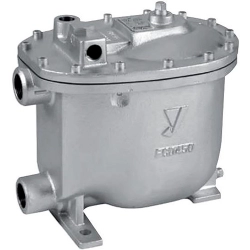 Condensate pump mechanical Yoshitake PF-2000
Condensate pump mechanical Yoshitake PF-2000
- Manufacturer: Yoshitake (Japan)
- Material: Ductile iron, stainless steel
- Consumption: 800 kg/h
 Condensate pump mechanical Yoshitake PF-7000
Condensate pump mechanical Yoshitake PF-7000
- Manufacturer: Yoshitake (Japan)
- Material: Ductile iron, stainless steel
- Consumption: 8000 kg/h
 Condensate pump TLV GP5C
Condensate pump TLV GP5C
- Manufacturer: TLV (Japan)
- Material: cast iron, stainless steel
- Critical case parameters (not operating parameters): maximum allowable pressure (bar g) Pmax: 8 maximum allowable temperature (°C) Tmax: 220
 Condensate pump TLV GT5C
Condensate pump TLV GT5C
- Manufacturer: TLV (Japan)
- Material: cast iron, stainless steel
- Critical case parameters (not operating parameters): maximum allowable pressure (bar g) Pmax: 8 maximum allowable temperature (°C) Tmax: 200
 Condensate pump TLV GP10L
Condensate pump TLV GP10L
- Manufacturer: TLV (Japan)
- Material: cast iron, carbon steel
- Critical case parameters (not operating parameters): maximum pressure (bar g) Pmax: 13 (cast iron), 21 (steel) maximum permissible temperature (°C) Tmax: 200 (cast iron), 220 steel.
 Condensate pump TLV GP10F
Condensate pump TLV GP10F
- Manufacturer: TLV (Japan)
- Material: forged steel, carbon steel
- Critical case parameters (not operating parameters): maximum pressure (bar g) Pmax: 10.5 maximum permissible temperature (°C) Tmax: 220
 Condensate pump TLV GT10
Condensate pump TLV GT10
- Manufacturer: TLV (Japan)
- Material: cast iron, steel
- Critical case parameters (not operating parameters): maximum pressure (bar g) Pmax: 13 (cast iron), 16 (steel) maximum permissible temperature (°C) Tmax: 200 (cast iron), 220 steel.
 Condensate pump TLV GP10
Condensate pump TLV GP10
- Manufacturer: TLV (Japan)
- Material: cast iron, steel
- Critical case parameters (not operating parameters): maximum pressure (bar g) Pmax: 13 (cast iron), 16 (steel) maximum permissible temperature (°C) Tmax: 200 (cast iron), 220 steel.
Shown 8 from 16
show all
 Individual heating station of the heating system according to an independent connection scheme
Individual heating station of the heating system according to an independent connection scheme
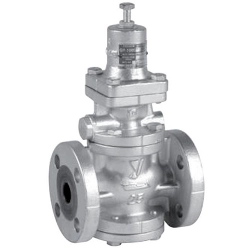 Reducing valve for steam Yoshitake GP-1000EN
Reducing valve for steam Yoshitake GP-1000EN
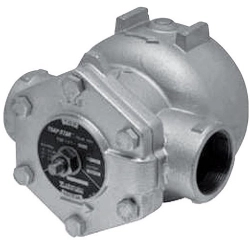 Float steam trap Yoshitake TSF-10
Float steam trap Yoshitake TSF-10
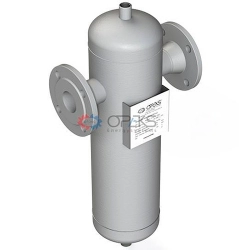 Centrifugal steam separator OPEKS-1-SC16-1-F50
Centrifugal steam separator OPEKS-1-SC16-1-F50
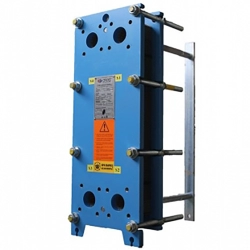 Plate heat exchanger THERMAKS РТА (GC)-16
Plate heat exchanger THERMAKS РТА (GC)-16
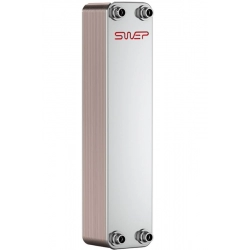 Brazed heat exchanger SWEP B25T
Brazed heat exchanger SWEP B25T
 Brazed heat exchanger SWEP B25THx20
Brazed heat exchanger SWEP B25THx20
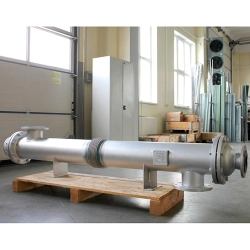 Shell and tube coolers
Shell and tube coolers
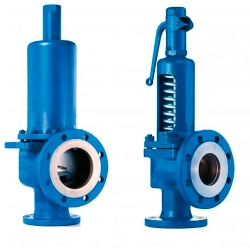 Safety valve LESER 441/442
Safety valve LESER 441/442
General information about what a mechanical condensate pump is intended for
The operation of various steam-gas pipeline systems is associated with the formation of large volumes of liquid condensate (in the form of hot, or even overheated water), as well as the need for its removal and return (pumping) into the working circulation loop. Multiple conversion of water vapor into liquid condensate (water) and vice versa, significantly increases the efficiency of steam condensate systems, allows their operation with a minimum water intake from the make-up systems, or even for some time - completely autonomously. Often the operation of such steam-condensate systems is associated with:
- with conditions of very high humidity or high temperature of the pumped condensate, excluding or complicating the use of electrically driven water pumps for pumping condensate, and their power supply networks;
- with the need to ensure continuous and trouble-free operation of all subsystems, incl. condensate drainage subsystem, regardless of the presence of voltage in the power supply networks;
- the need to pump low pressure condensate into a higher pressure condensate header
To ensure uninterrupted and trouble-free operation of subsystems for draining liquid condensate of steam-gas systems without the use of electricity (electric drive motors), so-called. mechanical condensate pumps, the mechanism of which is driven by the energy (pressure) of the working medium, in this case, superheated or saturated water vapor (or compressed air). The same tasks are solved, and on the same principle, condensate pumps work in other types of pipeline systems (cryogenic (nitrogen, freon), pneumatic), the work of which is also associated with the formation of liquid condensate, and the need to drain it.
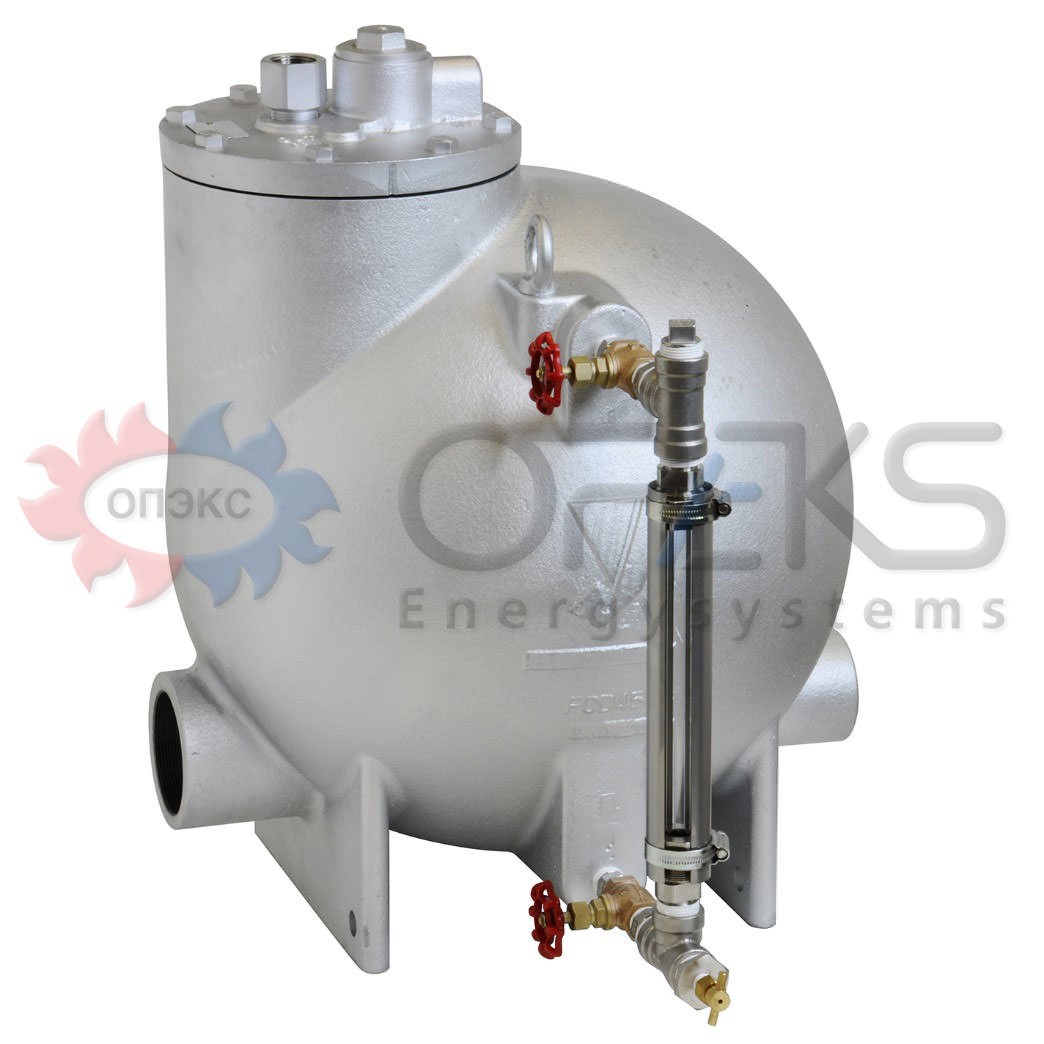
Principle of operation, device, scheme of operation of a mechanical condensate pump
The operation of a mechanical condensate pump is based on the principle of mass displacement from its chamber of one (pumped) moving medium by another moving medium (driving), which is under a higher pressure. The main condition for the operability of the displacement mechanism is the fundamental immiscibility of mobile media, which for this must necessarily be in different states of aggregation: liquid (displaced / pumped medium) and gaseous (displacing / driving medium). The pumped medium in this case will be liquid condensate, which is formed as a result of heat loss by the gaseous working medium in the main circulation loop, and the driving medium of the pump is the working gaseous medium partially removed from the main circulation loop.
Structurally, the condensate pump consists of the following main parts:
- a housing that simultaneously (more precisely, alternately, according to operating cycles) plays the role of a vessel in which liquid condensate is collected, and a working chamber in which the liquid pumped-over condensate is displaced by a gaseous driving medium;
- an inlet pipe with a check valve, which serves to supply liquid condensate from a condensate collector to the pump;
- an outlet pipe with a check valve to drain the pumped-over condensate into the discharge pipeline;
- an inlet valve for supplying a gaseous displacing (driving) medium to the chamber;
- a ventilation valve for removing the spent driving medium from the chamber;
- a float-type switching mechanism that controls the operation of the valves of the condensate pump.
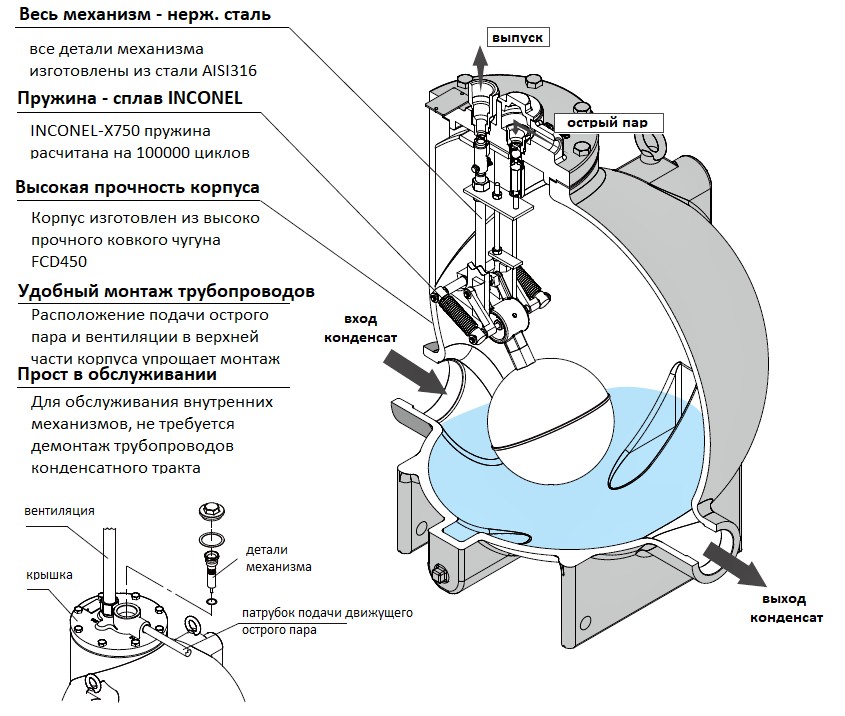
Rice. 1 Construction of the condensate pump model PF-7000 Yoshitake (Japan)
The scheme of operation of a mechanical condensate pump is cyclical, based on coordinated (controlled) switching of valves through which it is connected to condensate drainage systems and circulation of a moving gaseous medium.
At the beginning of the working cycle, liquid condensate, through an open valve on the inlet pipe, begins to flow into the pump casing (chamber). At the same time, the ventilation valve is also in the open position, thereby lowering the pressure in the working chamber to the level required for the liquid condensate suction cycle. The rising level of liquid in the chamber begins to raise the float, which, having reached a certain position, activates the switching mechanism, which, in turn, switches the valves:
- closes the valve - on the inlet and vent;
- opens valves - gas inlet and outlet.
After that, the gaseous driving medium, which is under high pressure, enters the pump chamber, and through the open valve of the outlet branch pipe displaces the pumped condensate from it into the discharge pipeline. As a result of this displacement, the liquid level in the chamber drops, the float drops to a critical level, while the switching mechanism:
- closes valves - gas inlet and outlet;
- opens the valve - on the inlet and vent.
A new cycle of operation of the condensate pump begins.

Fig. 2 Stages of condensate pump PF-7000 Yoshitake (Japan)
Condensate pump application diagrams
Depending on the pressure at which condensate is pumped out in the steam condensate system, there are two main schemes for switching on condensate pumps.
- Open system . It is used to drain condensate from a receiver - a condensate collection tank, which is connected to the atmosphere and, accordingly, contains condensate at atmospheric pressure. Condensate enters the receiver, and secondary boiling steam can form in the receiver, which is advisable to return to the steam system in order to avoid losses of thermal energy. The condensate is discharged by a condensate pump into a condensate collector.
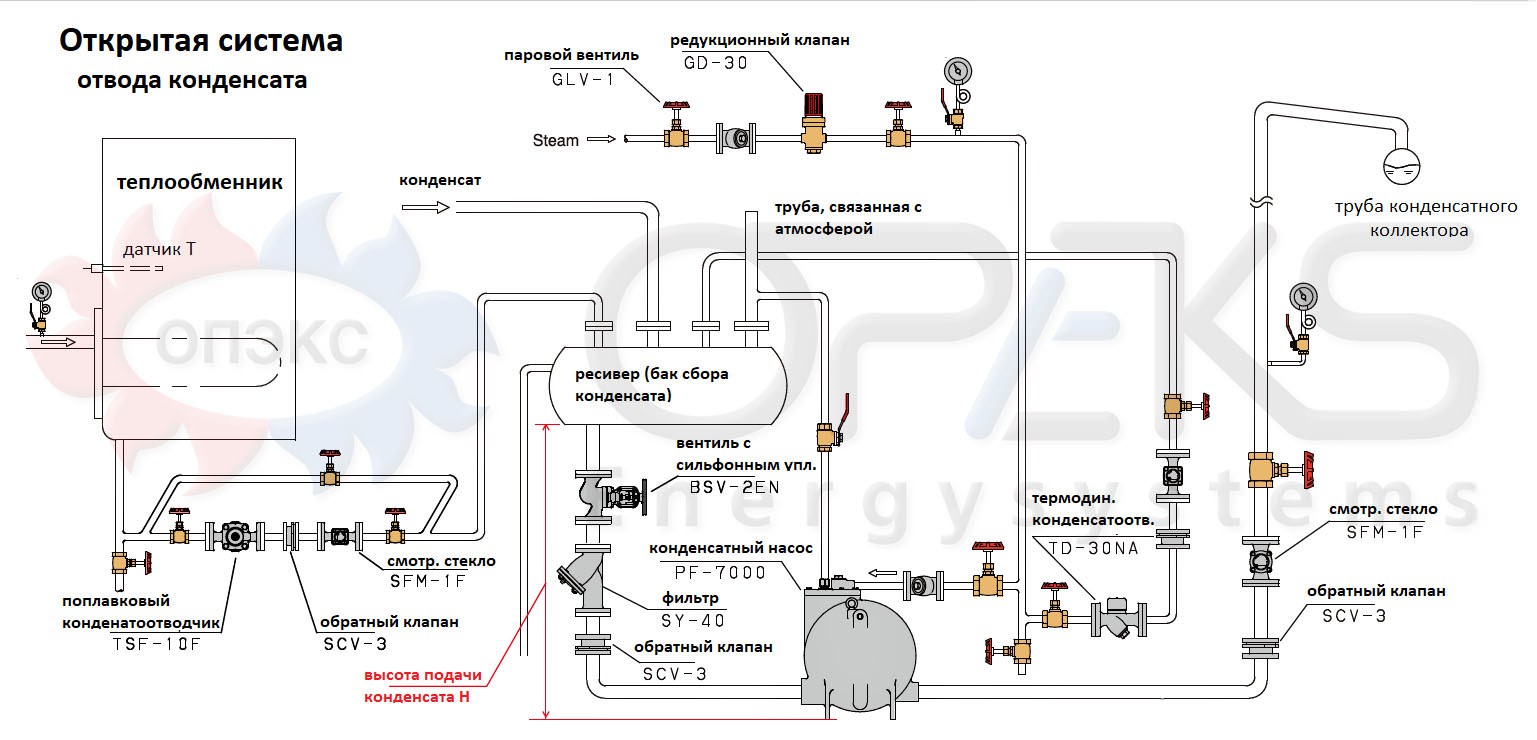
- Closed system . It is used to drain condensate from a receiver - a condensate collection tank, which is under pressure different from atmospheric pressure. Typically, the pressure is higher than atmospheric pressure, but it can be lower. When designing a closed condensate drainage system, 2 types of condensate pumps can be used:
- Standard condensate pump with additionally installed float steam trap at the outlet of the condensate pump before the check valve (models PF-2000, PF-7000);
- Combined condensate pump with integrated condensate drain or so-called pumping condensate drain (model TFA-2000).
When the condensate pressure is sufficient to drain the condensate into the collector, only the float steam trap works. When the condensate pressure is not sufficient to drain through the trap, the internal reservoir of the condensate pump begins to fill, the float rises, activating the live steam mechanism, displacing the condensate into the collector, in accordance with the process described above.

Applications for mechanical condensate pumps
Mechanical condensate pumps are widely used in pipeline systems with a gaseous working medium, the operation of which is associated with the formation of significant volumes of liquid condensate, and the need for their removal (over considerable distances or heights) by mechanical pumping, provided that the use of electric driven pumps here is impossible or impractical ...
The list of such systems includes:
- steam-gas drive of turbines, other machines and mechanisms;
- steam heating systems;
- steam heating / heating systems in technological units;
- large-sized steam heat exchangers and heaters;
- large-sized refrigeration and cryogenic installations (working medium - freons or nitrogen);
- industrial compressed air supply systems.
Parameters for the selection of a condensate pump (mechanical)
The selection of a mechanical condensate pump for a steam condensate system is carried out according to the following parameters:
- by the nature of the pumped and moving media - condensate and steam (compressed air), respectively;
- by the pressure of the driving medium, bar;
- by the condensate pressure at the inlet to the condensate pump and the pressure that must be provided at the outlet from the pump, taking into account the height of the condensate rise;
- according to the maximum operating temperature, deg. WITH;
- according to the required pumping performance (throughput), kg / h;
- by the type of connection to the pipelines of the pumping and driving medium (flange / threaded).
Japanese condensate pumps from Yoshitake
The OPEKS Energosystems company, specializing in the production and supply of high-quality heat and power equipment, offers complex solutions that include both, in fact, heat power units, and the entire complex of associated and supporting pipeline valves. As mechanical condensate pumps that can work in conjunction with plate and shell-and-tube heat exchangers OPEKS, steam heaters, we offer products from the well-known Japanese corporation Yoshitake Inc., which is one of the world leaders in the market of pipeline fittings and automation for steam and hot water systems.
Condensate pumps provide a condensate capacity of a single unit of more than 8000 kg / h, and if it is necessary to obtain a higher capacity, 2 or more condensate pumps are installed in parallel. There are models designed to work with low condensate flow rates.
It is known that the Yoshitake brand is trusted by consumers not only in Japan, but also in many other countries of the world. The corporation's factories are located in Japan, USA, Thailand.
OPEKS Energysystems specialists have been convinced of the reliability of the Japanese Yoshitake equipment in many modernization projects of steam condensate systems. Therefore, we recommend only proven and high-quality equipment to our customers.









